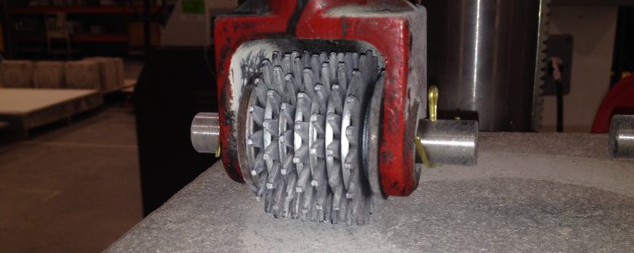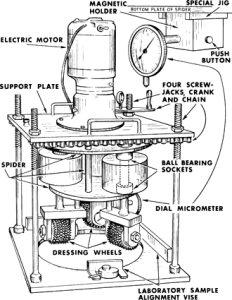Concrete floors are subjected to continuous wear, from heavy equipment in the manufacturing world to the retail industry’s constant foot traffic. In response, many design professionals use liquid floor hardeners or densifiers to increase protection against potential damage and premature wear of the slab surface.
How Concrete Densifiers Work
These densifiers, such as Nox-Crete’s Duro-Nox liquid floor hardeners, react with calcium hydroxide - a natural by-product of cement hydration – to densify the concrete surface by creating calcium silicate hydrate gels that fill voids and pores to increase concrete durability, impact resistance and abrasion resistance. This process reduces the porosity of concrete, creating a dustproofed surface for easy cleaning and chemical resistance to most organic acids, alkalis, salts, foods, fats, oils and more. In addition to increased protection, floors treated with liquid floor hardeners gain an attractive, glossy sheen over time.
Nox-Crete manufactures three types of liquid floor hardeners or densifiers: Duro-Nox, a traditional sodium silicate; Duro-Nox LS, a lithium silicate; and Duro-Nox LSC, a less reactive lithium silicate.
ASTM C779 - Measuring Abrasion Resistance
Many in the industry rely on data from standardized tests to make informed decisions when choosing a liquid floor hardener. One such test is ASTM C779, or “The Standard Test Method for Abrasion Resistance of Horizontal Concrete Surfaces,” which measures the abrasion resistance of untreated and treated concrete surfaces. The test provides a framework for evaluating a liquid floor hardener’s ability to protect concrete floor surfaces from daily wear and damage. Though the methods are not intended to forecast the longevity of a surface, they offer insight into the effectiveness of densifiers compared to an untreated floor surface.
ASTM C779 Test Procedure Options
The standard describes three methods for testing resistance, each utilizing a different method of abrasion.
- Procedure A uses revolving steel disks with abrasive grit to scuff and scrape the test sample.
- Procedure B uses rotating steel dressing wheels mounted on horizontal shafts to simulate wheel and caster traffic.
- Procedure C uses steel ball bearings to determine high-impact, high-stress resistance.
Testing Duro-Nox Hardeners
Because of the industry importance of the C779 standard, Nox-Crete hired Chicago-based Nelson Testing Laboratories to test all three Duro-Nox densifiers following Procedure B methods – as it most accurately simulates the use of forklifts, carts, dollies and other equipment with steel casters or hard rubber wheels common across warehouses, distribution centers and retail environments. See ASTM C779 - A Closer Look at the bottom of the page to learn more about test Procedure B.
Results
Concrete treated with Duro-Nox liquid floor hardener experienced significantly increased abrasion resistance compared to the control sample. See the table below for full results.
- Duro-Nox offered an almost 500% increase in abrasion resistance after 15 minutes and 145% after 30 minutes.
- Duro-Nox LS showed approximately 300% increased abrasion resistance after 15 minutes and 145% after 30 minutes.
- Duro-Nox LSC presented 200% increased abrasion resistance after 15 minutes and 90% after 30 minutes.
Percent Improvement in Abrasion Resistance When Compared to Control Sample
Testing Confirms Duro-Nox Value
The effectiveness of Duro-Nox hardeners is well-known from their use on job sites worldwide, but these test results provide substantial validation of their ability to significantly increase resistance to abrasion from common industry use. Applying a Duro-Nox product to a floor can greatly increase the life of a surface and reduce long term maintenance costs. Going forward, professionals can choose Duro-Nox products knowing fully that they offer considerable protection against the daily abuse high-traffic floors are subjected to while adding considerable sheen and aesthetic value.
ASTM C779 - A Closer Look
-
Procedure B testing equipment consists of a motor-driven spider arrangement that turns at 56 revolutions per minute, suspended from the motor shaft.
- Three sets of seven dressing wheels are mounted to horizontal shafts hanging from the spider.
- A 12 x 12 x 5.5-inch concrete sample is placed within the alignment vise
- The dressing wheels rotate around the sample, creating a grooved path that abrades softer aggregate and mortar.
- Measurements are taken throughout the test with a depth micrometer, and the test is repeated on three separate samples.
 chemical solutions to concrete problems
chemical solutions to concrete problems
